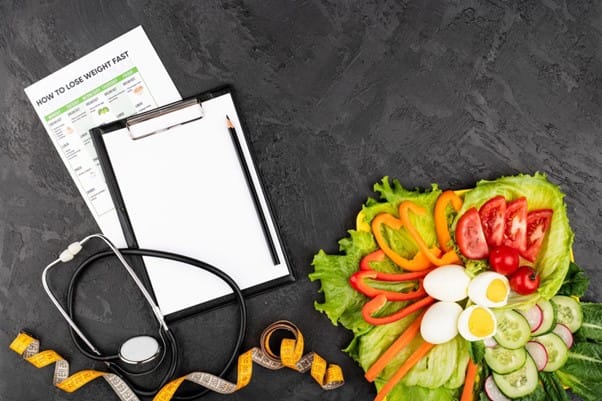Isometric Exercises for Supporting PRP Treatment Outcomes
Overview – Isometric Exercises for Supporting Recovery After PRP
Platelet-Rich Plasma (PRP) treatment has gained popularity as a regenerative therapy that utilizes your body’s own healing potential. When considering PRP treatment outcomes, incorporating isometric exercises for PRP recovery emerges as a pivotal factor. Enter isometric exercises – a valuable addition to your PRP recovery toolkit. Isometric exercises, known for their static nature, provide a unique avenue for enhancing the healing process. In this comprehensive guide, we’ll explore how incorporating isometric exercises into your post-PRP routine can accelerate recovery, boost strength, and contribute to overall well-being.
What are Isometric Exercises
Isometric exercises after PRP treatment are static yet potent movements. These exercises, such as pushing against a wall or holding a plank position, become essential components in the recovery process. Understanding their role is fundamental to maximizing PRP treatment outcomes and isometric exercises.
These exercises engage your muscles without changing their length, offering a low-impact yet potent method to build strength. They’re accessible to people of various fitness levels and can be performed virtually anywhere. Understanding the basics of isometric exercises lays the foundation for exploring their synergy with PRP treatment.
How Isometric Exercises Enhance PRP Treatment
Isometric exercises serve as the perfect companion to PRP treatment by addressing key aspects of the healing process. Here’s how they enhance the efficacy of PRP:
-
Improved Blood Circulation:
Isometric contractions promote better blood flow to the targeted areas. Enhanced circulation is vital for transporting the platelets and growth factors delivered through PRP, ensuring they reach the injured tissues more efficiently.
-
Muscle Activation and Support:
PRP therapy aims to stimulate tissue repair, and isometric exercises align with this goal. By activating muscles without causing excessive strain, isometrics complement PRP by providing gentle yet effective support to the treated area.
-
Enhanced Joint Stability:
For joint-related PRP treatments, maintaining stability is crucial. By incorporating isometric exercises for PRP knee treatment, one can specifically target and strengthen tissues, crucial for optimizing PRP treatment outcomes and isometric exercises.
Incorporating Isometric Exercises for PRP Recovery
Incorporating isometric exercises into your PRP recovery plan is a strategic step towards enhancing the overall healing process. These exercises, known for their static nature, provide a unique form of muscle engagement that complements the regenerative effects of PRP. By introducing isometric exercises, you’re not only targeting specific muscle groups but also promoting stability and strength, crucial components in the rehabilitation journey.
Understanding the right timing for these exercises is essential. Typically, starting with gentle isometrics during the initial phases of PRP recovery helps in avoiding undue stress on healing tissues. As your recovery progresses, gradually intensifying the isometric exercises ensures a balanced approach to rebuilding strength without compromising the healing process.
Preparing Your Body for Isometric Workouts
Before delving into isometric exercises, it’s imperative to prepare your body adequately. This involves a comprehensive warm-up routine designed to increase blood flow, flexibility, and joint mobility. This warm-up routine is essential for isometric exercises for knee injuries and PRP, ensuring a safe and effective workout that contributes to strengthening tissues with isometric after PRP treatment A proper warm-up may include light cardiovascular exercises like brisk walking or cycling to elevate your heart rate gradually. Dynamic stretches that mimic the movements involved in isometric exercises can further prepare your muscles for the forthcoming activity.
Customizing Isometric Exercises for Specific Conditions
Not all injuries or conditions are alike, and adopting a one-size-fits-all approach to isometric exercises may not yield optimal results. Customizing these exercises based on specific conditions is key to their effectiveness in supporting PRP treatment outcomes and isometric exercises. For instance, individuals recovering from joint injuries may benefit from isometric exercises that focus on stabilizing and strengthening the surrounding muscles. On the other hand, those undergoing PRP for soft tissue injuries may require isometric exercises that target flexibility and balance.
Consulting with a healthcare professional or a qualified fitness trainer like we as the best hospital for Platelet-rich plasma in Mumbai at RNR Medicine, can provide valuable insights into tailoring isometric exercises to your unique situation. They can help identify the areas that need attention, design a personalized isometric workout plan, and monitor your progress to ensure that you’re on the right track to recovery.
Targeted Isometric Techniques for Different PRP Treatments
PRP treatments vary, and so should the accompanying isometric techniques. Strategies for joint regeneration and isometric exercises for PRP knee treatment showcase the specificity required for tailored support in diverse PRP procedures.
Isometric Strategies for Joint Regeneration
Joint regeneration is a complex process, and isometric exercises can significantly contribute to this journey. Isometrics focus on engaging muscles around the joint without causing excessive movement, making them ideal for joint rehabilitation. You can explore techniques that strengthen and support joints, optimizing the benefits of PRP treatment at our top hospital for Platelet-rich plasma in Mumbai.
For knee joint regeneration after PRP, isometric exercises like quad sets and hamstring contractions prove valuable. These exercises target the muscles surrounding the knee joint, promoting stability and aiding in the regeneration process.
Isometric Exercises for Soft Tissue PRP Applications
Soft tissue injuries, including muscle strains or tears, often benefit from PRP applications. Isometric exercises can complement these treatments by providing targeted support to the healing soft tissues. For soft tissue PRP applications, isometric exercises should focus on controlled muscle engagement to avoid unnecessary stress on the injured area. Isometric wall pushes and static lunges are examples of exercises that can be adapted to different soft tissue injuries. These exercises help in strengthening the surrounding muscles and promoting stability while minimizing the risk of re-injury.
Strengthening Tissues with Isometrics after PRP
Post-PRP treatment, the focus shifts to strengthening tissues. Isometric exercises after PRP treatment become a crucial element in this phase, contributing to long-term recovery. Isometric exercises for tissue strengthening involve sustained muscle contractions without joint movement. For instance, isometric planks and wall angels can be effective in strengthening core muscles and supporting the spine after PRP treatment for back injuries. These exercises create a stable foundation, allowing the treated tissues to rebuild and adapt over time. Incorporating these isometric strategies and exercises into your post-PRP recovery plan ensures a comprehensive approach to healing.
Isometric Exercises for Knee Injuries and PRP
Knee injuries can be particularly challenging, often requiring comprehensive approaches for effective recovery. When combining isometric exercises with PRP treatment, a tailored strategy can significantly enhance the healing process.
-
Understanding Knee Injuries:
Knee injuries, such as ligament strains or meniscus tears, are common reasons for seeking PRP treatment. Isometric exercises, in this context, focus on strengthening the surrounding muscles without exerting excessive pressure on the injured area.
-
Isometric Techniques for Knee Strengthening:
Specific isometric exercises for Knee treatment like quad sets, where you tighten the thigh muscles while sitting or lying down, and wall sits, where you maintain a seated position against a wall, can be instrumental.
-
Progression and Caution:
Start with low-intensity isometric exercises and gradually progress as your knee heals. It’s crucial to work within pain-free ranges of motion and consult with your healthcare provider to ensure you’re following an appropriate regimen for your specific knee condition.
Elbow Conditions and Targeted Isometrics with PRP
Elbow conditions can be challenging, but combining PRP with targeted Isometric exercises for PRP recovery can make a significant impact. Explore exercises designed to strengthen and support elbow recovery.
-
Addressing Tendon Issues:
Elbow conditions often involve tendons, which may benefit from isometric exercises focused on gentle contraction. Isometric wrist flexor and extensor exercises, where you resist movement without joint motion, can effectively engage the affected tendons, aiding in their recovery.
-
Strengthening the Forearm Muscles:
Isometric exercises targeting forearm muscles, like gripping a softball or towel, can be beneficial. These exercises help improve grip strength, a crucial factor in the rehabilitation of elbow conditions, while PRP accelerates the healing process within the affected tendons.
-
Gradual Integration and Consultation:
As with any rehabilitation plan, the integration of isometric exercises for elbow conditions should be gradual. Consultation with a healthcare professional is essential to ensure that the exercises align with your specific condition and treatment plan.
Wrist and Hand Strengthening in PRP Recovery
Wrist and hand injuries, often resulting from conditions like carpal tunnel syndrome or sprains, require careful attention and targeted exercises to regain strength. Integrating isometric exercises with PRP treatment can provide comprehensive support for these delicate areas.
-
Isometrics for Wrist Stability:
Isometric exercises emphasizing wrist stability, such as isometric wrist flexion and extension against resistance, contribute to the rehabilitation process. These exercises help fortify the muscles around the wrist joint without placing excessive strain on the injured area.
-
Addressing Hand Functionality:
Hand injuries may impact day-to-day activities. Isometric exercises involving finger squeezes using a soft ball or putty can aid in rebuilding hand strength and dexterity. The combination of PRP and isometrics accelerates tissue repair and functional recovery.
-
Consultation and Individualization:
Individualized rehabilitation plans are crucial for wrist and hand injuries. Consult with your healthcare provider to determine the appropriate intensity and type of isometric exercises based on your specific condition and response to PRP treatment.
In conclusion, the synergy between PRP treatment and isometric exercises offers a holistic approach to recovery, addressing specific needs for various injuries. Whether rehabilitating knee, elbow, wrist, or hand conditions, the incorporation of targeted isometrics enhances the effectiveness of PRP therapy. By strategically incorporating isometric exercises for PRP recovery, one can significantly enhance PRP treatment outcomes, ensuring a well-rounded approach to healing and recovery. Remember, the key to successful rehabilitation lies in a gradual and personalized approach, always guided by professional advice. By embracing this combined strategy, you empower yourself on the journey to a stronger, more resilient recovery.
Explore the benefits of PRP treatment for ligaments in our blog post: PRP Treatment for Ligaments
Best hospital for Platelet-rich plasma in Mumbai
Welcome to the epitome of healthcare excellence in Mumbai – RNR Medicine. Renowned for its commitment to cutting-edge medical practices and compassionate patient care, we proudly stand as the best hospital for Platelet-Rich Plasma in Mumbai. Our state-of-the-art facilities and a team of skilled medical professionals ensure you receive top-notch treatment. At RNR Medicine Department at Jaslok Hospital, we believe in harnessing the power of PRP to rejuvenate and heal. Our dedicated specialists tailor each treatment to your unique needs, providing a personalized approach to your wellness.



